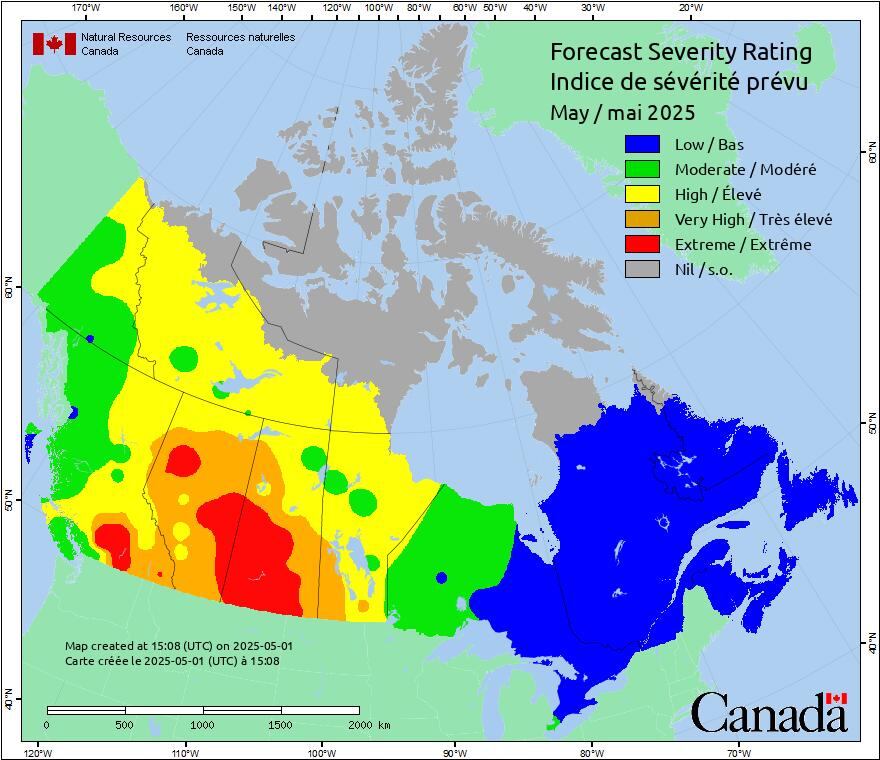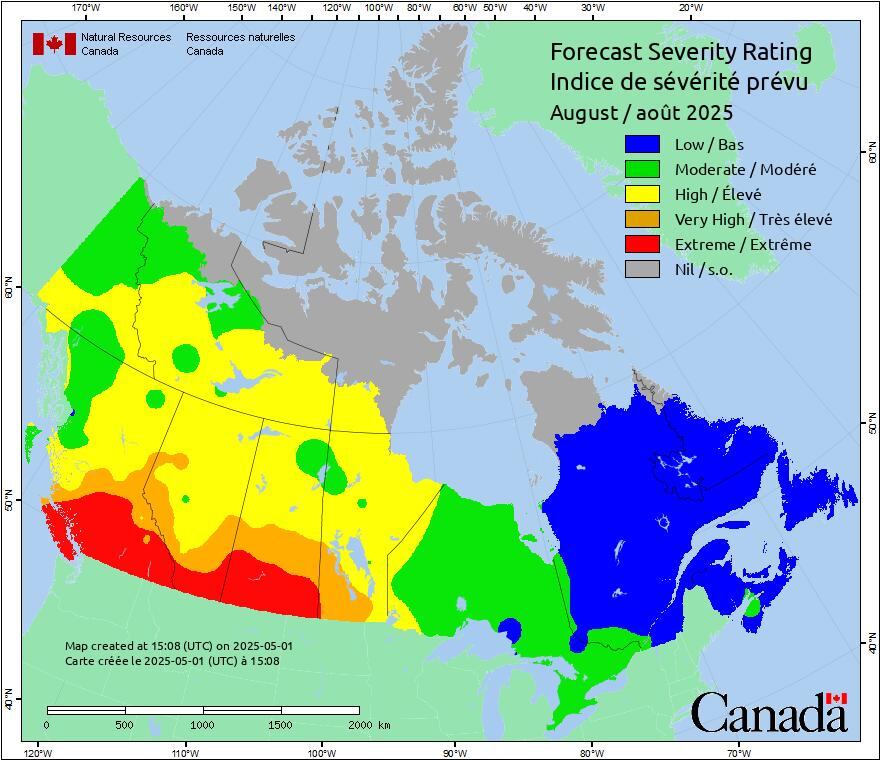British Columbia is already seeing certain regions experiencing severe drought conditions, which might not bode well for the coming summer months.
In the province's First drought report for 2025 Several areas have been identified as zones of concern, particularly the Fort Nelson, North Peace, and East Peace regions, where moderate to severe drought conditions have been documented.
The majority of the province remains unassessed, however, Vancouver Island is also said to be experiencing severe drought conditions, ranking at level three out of a possible five levels.

Dave Campbell of the River Forecast Centre says while conditions are not as dry as they were in 2024, they are still concerning.
The northeast, in particular, he said is now entering its third year of a multi-year drought where there are "long-term precipitation deficits" that contribute to dangerous conditions overall, such as wildfires.
Already, the province is battling multiple fires in the area that have reemerged after laying dormant over the winter months, a phenomenon that is aggravated by a lack of rain and snowfall and open burning bans are in place in parts of the northeast and Kamloops regions effective noon Friday.
Fire research analyst Richard Carr of Natural Resources Canada says his agency's forecast shows the potential for yet another active wildfire season across Western Canada, though he noted that many parts of B.C. have seen more precipitation this year than they did last year.
Forecast maps released by the agency show the potential for a particularly dangerous fire season in July and August, with parts of southwest B.C. marked in red due to elevated risk.


Carr cautioned, though, that it can change quickly depending on what sort of weather occurs in the months ahead.
"At this moment, it’s not particularly concerning, but ultimately, everything hinges on the amount of precipitation we receive from now until summer,” he explained. “If things unfold similar to what happened in 2017 or 2018, come July, we might face quite arid conditions once more and possibly experience an increase in fire activity.”